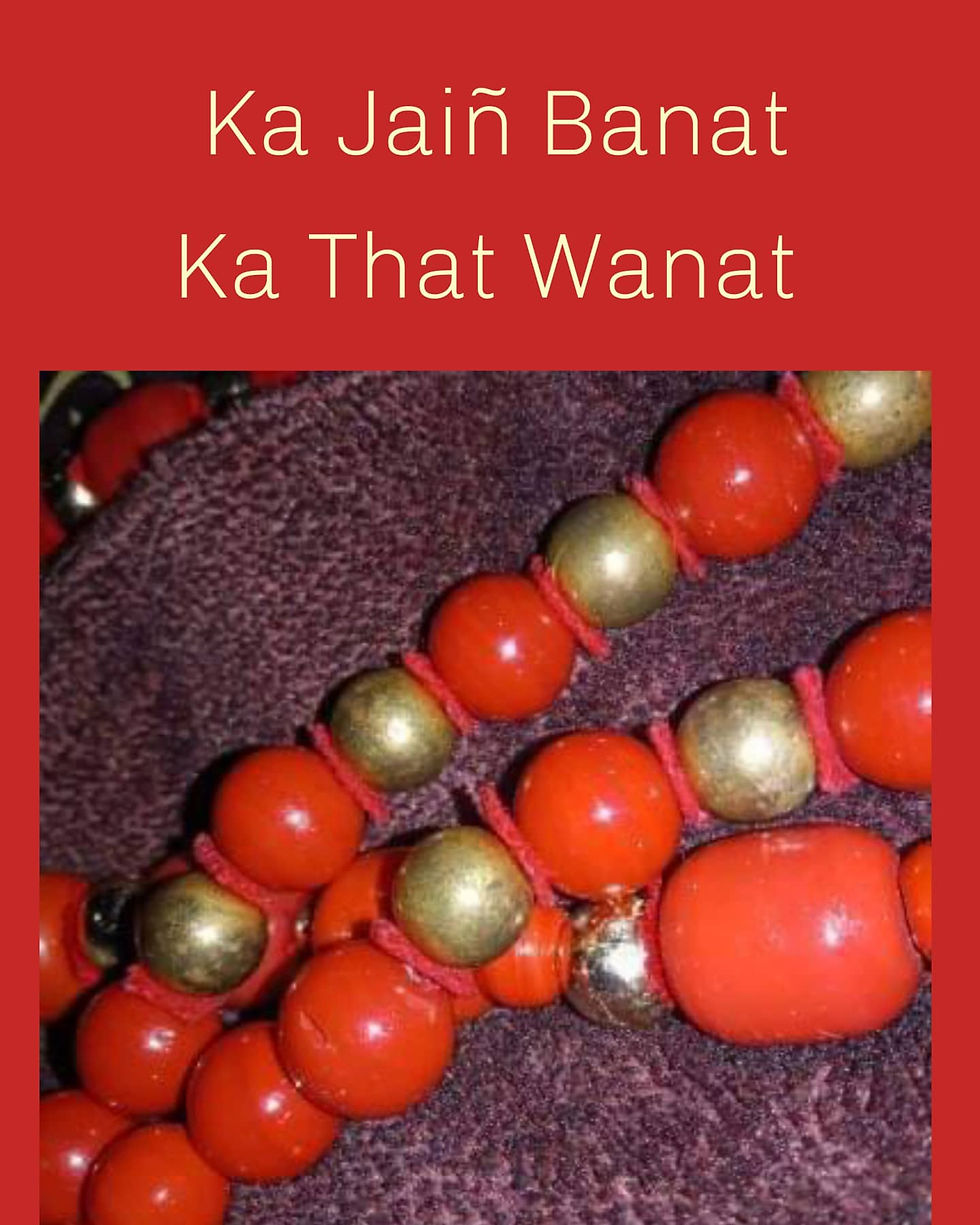
La pynïakhlad ïa u kpieng sop ksiar na u paila, da i jaiñ banat basaw. Ine i jaiñ banat saw ym tang ba i shat pynitynnat haba peit hynrei i ïada ruh ba u paila un ym kyrshut bad pynkhoh phler ïa ka 'siarsla ba la sop ha u kpieng ksiar.
Da pyngkhlaad ya'u kpieñ ksiar na u paila, da ka wanat waso, kani ka wanat ym toh du kat u pynyoo suk eh ko hawa pait, pyllait haroh ko na i khoi wa ya kyrchut u paila wa i ksiar.
The gold bead is separated from the coral bead (paila) by a red piece of red cloth called "ka jaiñ banat basaw" in Khasi and "ka that wanat waso" in Pnar. Not only does the banat/ wanat cloth bring beauty but it also prevents the friction between the "paila" and the gold bead.
"Ka jaiñ banat basaw" (Khasi) or "ka that wanat waso" (Pnar) is the red cloth that forms a separation between the paila (coral beads) and the golden beads that form the Khasi Paila necklace. Thank you @xdtnoahjupejackllthmanar for sending this interesting post about the Paila necklace! 😄🙏 Khublei Chiboon Anvil wa pûnïarap phi u pûnkylla cha ka ktien Pnar ya kani ka post 🙏😄 🟡 Photo credit: @xdtnoahjupejackllthmanar 🟡 Khasi excerpt: Kong Sweetymon Rynjah 🟡 Pnar translation: Anvil Laloo 🟡 English translation is by @speakyourroots
Comentarios